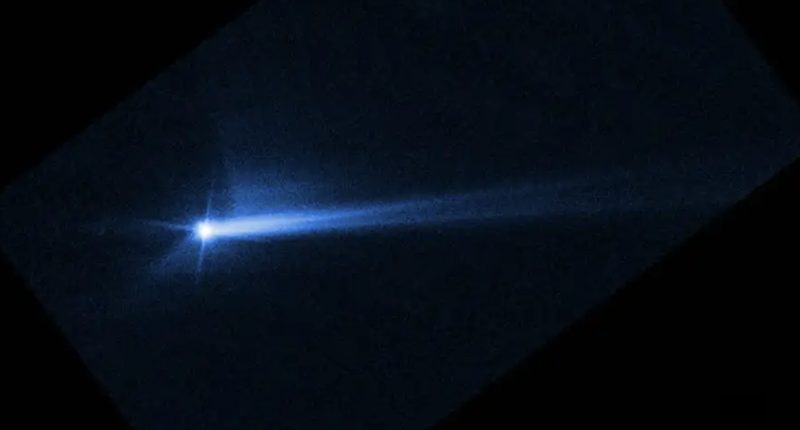A HIGH school teacher and his students have uncovered that an asteroid Nasa recently hit is behaving strangely in space.
Last year, Nasa carried out its Double Asteroid Redirection Test (DART) mission.
The mission consisted of a spacecraft smashing into a large asteroid dubbed Dimorphos.
Nasa’s experiment was hoping to solidify a method for protecting Earth from future asteroids.
Now, Dimorphos is behaving unexpectedly in that its orbit has continued to shrink since the collision.
This is odd, scientists say, because it was expected to slow down and eventually stabilize.
A teacher named Jonathan Swift and his students at Thacher School in California made the discovery using the school’s observatory there, New Scientist reported.
According to the team’s observations, they found the orbit of Dimorphos dropped by another minute more than a month after the collision in September 2022.
“The number we got was slightly larger, a change of 34 minutes,” says Swift. “That was inconsistent at an uncomfortable level.”
Swift and his team presented the findings at a meeting of the American Astronomical Society in New Mexico in June.
Most read in News Tech
“We tried our best to find the crack in what we had done, but we couldn’t find anything,” says Swift.
One theory for the slowing of Dimorphos’ orbit is something known as tumbling, which refers to tidal forces changing an object’s orbital period.
Nancy Chabot, the coordination lead on DART at Johns Hopkins Applied Physics Laboratory, says the DART team will publish its own findings soon.
“It’s really good to know what we did to Dimorphos,” says Chabot. “Those specific details are really key to applying this technique in the future if you needed to.”
DART MISSION
The spacecraft launched from Vandenberg Space Force Base in Santa Barbara County, California last year.
The impact between the craft and the space rock was recorded at exactly 7.14pm EST on September 26, 2022.
As of right now, Nasa says there are no asteroids larger than 140 meters in diameter known to be on a collision course with Earth for the next 100 years.
Alan Fitzsimmons, a DART team member and astronomy professor at Queen’s University Belfast, said he would like to test a gravity tractor technique next.
Fitzsimmons said this is important “because it’s actually very difficult to accurately guide and maneuver spacecraft in very close proximity to an asteroid.”
This post first appeared on Thesun.co.uk










